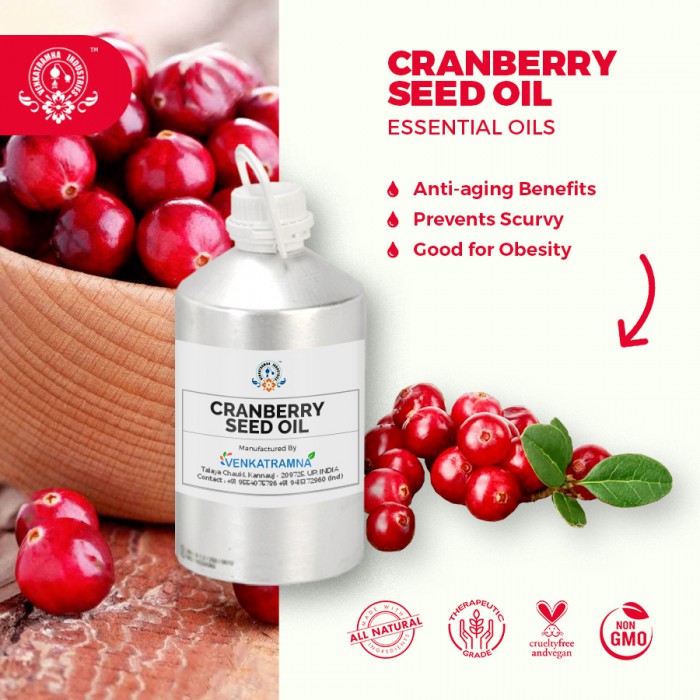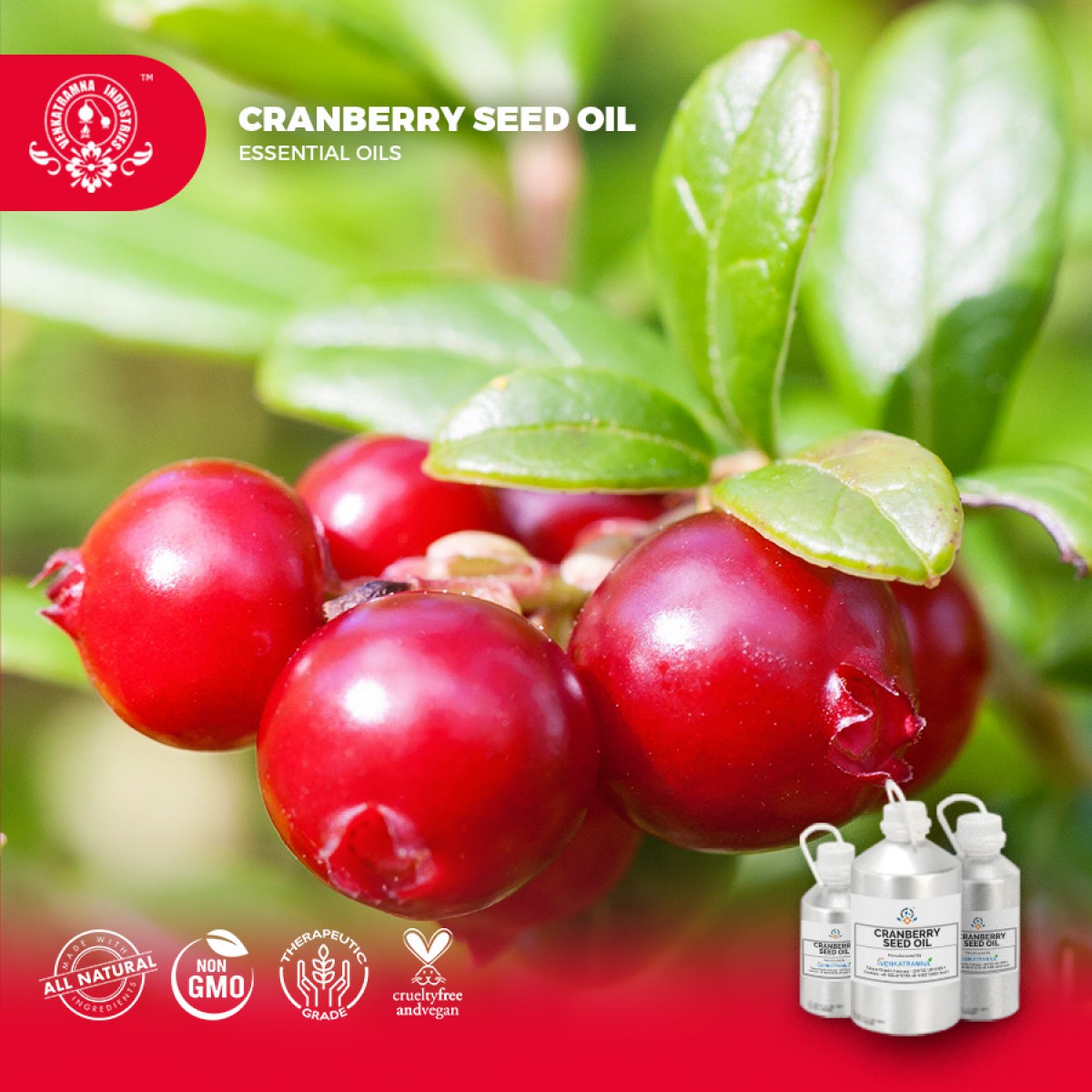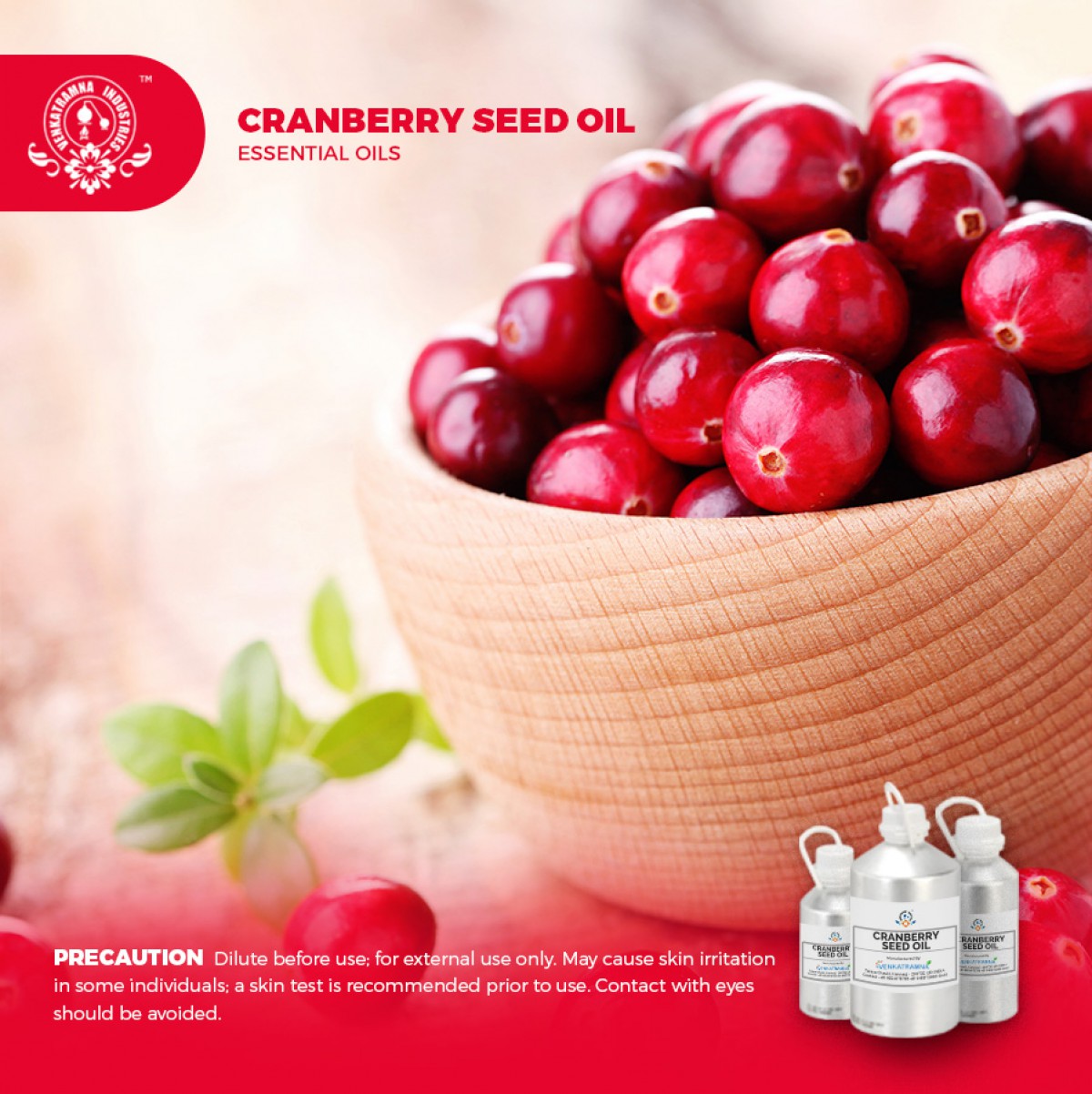Botanical Name: Vacinnium macrocarpon Common name: American Cranberry, Bearberry, C Read More
|
Botanical Name: |
Vacinnium
macrocarpon |
|
Common name: |
American Cranberry, Bearberry, Cranberry, Large Cranberry |
|
Plant family: |
Ericaceae |
|
Genus: |
Vaccinium |
|
Appearance/Color: |
Greenish-gold oil |
|
Odor: |
Characteristic of vegetable oil odor. |
|
Blends With: |
Omega-3, omega-6, and omega-9 fatty acids |
|
Origin: |
Columbia |
Vaccinium macrocarpon,
commonly called American cranberry, is native to bogs, swamps, and wet
shorelines in parts of northern and eastern North America. It is a low-growing
vine or trailing shrub (to 6" tall and spreading) with small, glossy
leaves. Small, nodding flowers with white to pink, recurved petals bloom from
late spring into early summer. The flowers are followed by plump, red to dark
purple, ovoid to round, 0.5" diameter fruits. The leaves of this plant are
a larval food source for the bog copper butterfly, the flowers are visited by
bees, and the fruits are eaten by birds and occasionally small mammals.
The genus name Vaccinium comes from an ancient Latin name apparently
derived from a prehistoric Mediterranean language. Its origin and meaning are
generally considered to be lost to time.
The specific epithet macrocarpon means large-fruited, about the
relatively large size of the fruit of this species. The cranberries have many
biological actions and deliberate as a most important medical fruit. These activities, particularly due to the
various phenolic compounds. It can be recommended
that the chronic use of cranberry reduced UTIs, Cardiovascular disease chance,
inhibits breast, colon, prostate cancer and other type of cancer.
DISCLAIMER
The complete range of conditions
or methods of use are beyond our control therefore we do not assume any
responsibility and expressly disclaim any liability for any use of this
product. Information contained herein is believed to be true and accurate however,
all statements or suggestions are made without warranty, expressed or implied,
regarding accuracy of the information, the hazards connected with the use of
the material or the results to be obtained from the use thereof. Compliance
with all applicable federal, state, and local laws and local regulations
remains the responsibility of the user.
The FDA has not evaluated the
statements on this website. No claims are made by Venkatramna Industries as to
the medicinal value of any products from vriaroma.com or by us. The information
presented here is for educating our customers about the traditional uses of
essential oils and is not intended to diagnose, treat, cure, or prevent any
disease. You are responsible for understanding the safe application of these products.
If you have any questions, please call or email us for further information.
As per NAHA guidelines, New Directions Aromatics
(NDA) does not recommend the ingestion of essential oils. It is imperative to
consult a medical practitioner before using Essential Oils for therapeutic
purposes. Pregnant and nursing women and those taking prescription drugs are
especially advised not to use this product without the medical advice of a
physician. The oil should always be stored in an area that is inaccessible to
children, especially those under the age of 7.
Historically, cranberry
(Vaccinium macrocarpon) has been used for the treatment of many diseases like
urinary tract infection. It is a rich source of bioactive compounds with broad
spectrum activities. It is being extensively studied for their anti-aging
activities and to improve cardiovascular health and enhance the ability to
inhibition or retarded the growth of cancer cell in the body. The phytochemical
constituent present in cranberries includes vitamin C, anthocyanidins,
catechins and proanthocyanidins (PACs). This peculiar combination of
phytochemicals present in cranberry may produce synergistic health effects and
serve as a potential promising source against many diseases.
For thousands of years, it can be
used as a food source. Native Americans used them in the preservation of meat
and as a medicine.
Cranberry and Urinary tract
infection
Urinary tract infections (UTIs)
are the second most common infection in the human body after respiratory
infection. This infection is critically occurring when a certain threshold
number of bacteria are present in the urine (normally 104 to 105 CFU per ml).
An epidemiologically survey reported that 80% of UTIs are caused by Escherichia
coli, and in 10-15% cases it is caused by Staphylococcus saprophyticus. Sometime
Other pathogens include Enterococci, Enterobacter, Klebsiella and Proteus
species are also contributing in the occurrence of infection. Among the human
population Urinary tract infections are more usual in adult females than
male. Approximately more than One fourth
of women population experiences this infection once or more in their lives, the
probabilities of UTIs increases with age. Since 1900s the juice of Cranberry
has long been used for the treatment of urinary tract infections. In 1966 ?rst
research was reported which shows the effect of cranberry on urinary tract. The
working mechanism of cranberry is to maintain the health of Urinary tract by
lowing its pH by secretion of hippuric acid, which is a bacteriostatic in
nature and could acidify urine (Moen 1962). The other manner of action of
cranberry extract for the prevention of urinary tract infection is a presence
of important compound know as (PAC), influence the adherence ability of
pathogenic Escherichia coli
COMMON USAGE
·
Anti-aging benefits
·
Treats lung inflammation
·
Prevents scurvy
·
Treats peptic ulcers
·
Good for obesity
·
Cures cold
·
Strengthens bones and teeth
·
Prevents cancer
·
Avoids respiratory infections
·
Prevents tooth decay
·
Improves cardiovascular health
·
Antitumor effects
·
Treats urinary tract infections
Ingredients:
TOXICOLOGICAL
INFORMATION
Safety Summary
·
Hazardous: Not Known
·
Contraindications: Pregnancy, and do not use if
under any medical condition.
·
Toxicity Data: No data available
·
Suspected Cancer Agent: Ingredients within this
product are not found on the following lists: FEDERAL OSHA Z LIST, NTP, IARC,
or CAL/OSHA and therefore are not considered to be, nor suspected to be,
cancer-causing agents by these agencies.
·
Irritancy: Skin: Not expected to be an irritant
·
Eyes: Not expected to be an irritant
·
Sensitization to the Product: This product is
not expected to cause skin sensitization.
·
Reproductive Toxicity: No specific information
is available concerning the effects of this product and its components on the
human reproductive system.
ECOLOGICAL
INFORMATION
·
Toxic
to aquatic organisms, No additional Data available.
·
Results of PBT and vPvB assessment
o
PBT: Not applicable.
o
vPvB: Not applicable.
·
Persistence and degradability No further
relevant information available.
·
Bio-accumulative potential No further relevant
information available.
·
Mobility in soil No further relevant information
available.





 MSDS-Cranberry.pdf
MSDS-Cranberry.pdf




